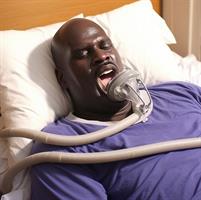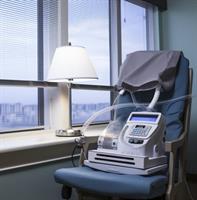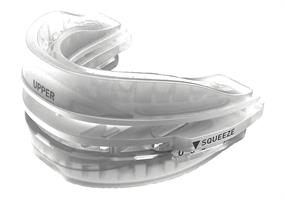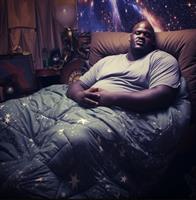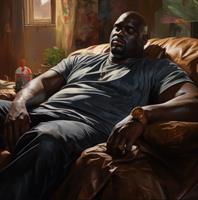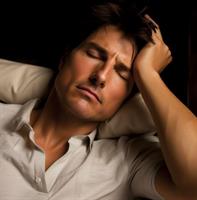When you think of NBA legend and TV personality Shaquille O’Neal, you might imagine his impressive basketball career or his larger-than-life presence. But did you know that Shaq has also been diagnosed with sleep apnea?
Shaq’s journey with sleep apnea is a powerful reminder that this condition can affect anyone, regardless of their physical fitness or fame.
In this blog post, we’ll take an in-depth look at Shaq’s experience, from his diagnosis to his treatment and advocacy for sleep apnea awareness. We’ll also explore the different types of sleep apnea, available treatments, and the importance of proper diagnosis and management, including the lesser-known issue of Shaq snoring.
Don’t let sleep apnea sneak up on you like it did on Shaq. Join us as we dive into the world of sleep apnea, its symptoms, and the various solutions that can help improve the quality of sleep for millions of people worldwide.
Key Takeaways
-
Shaq’s journey with sleep apnea has raised awareness of the condition and its risks.
-
Diagnosing and treating sleep apnea is essential to avoid serious health complications.
-
Shaq advocates for proper treatment, including CPAP machines, mouthpieces, lifestyle changes & more.
Shaq's Sleep Apnea Journey
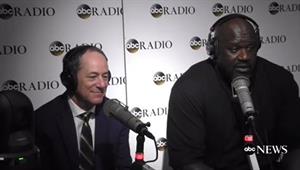
Shaq talking about snoring and sleep apnea:
"When you snore, it restricts your airway just a little bit. But when you have sleep apnea, it blocks your airways and I stopped breathing, 60 to 70 times a minute, when I'm sleeping. He also told me that it increases, three times worse, the risk of heart attack and stroke and he showed me a lot of other numbers and I started taking it seriously. And ever since I gained this information I have been sleeping better and feeling better, starting to get my college body back. I wanted to introduce this to the world."
Shaq on ABC Radio: source
Sleep apnea doesn’t discriminate, and even the strongest among us can be affected. Shaquille O’Neal’s journey with sleep apnea began when he realized that his snoring and episodes of stopped breathing during the night were more than just a nuisance - they were a sign of a potentially serious health problem.
After being diagnosed with sleep apnea, Shaq began treatment with a Continuous Positive Airway Pressure (CPAP) machine, which he found to be an effective snoring solution.
Shaq, an NBA legend, embarked on a journey with sleep apnea that not only enhanced his sleep quality and overall health but also motivated him to promote awareness about the condition. He has since partnered with the American Sleep Apnea Association, urging others to get tested and treated for this common yet often overlooked condition.
Diagnosis and Health Risks
Shaq’s snoring and episodes of stopped breathing during the night prompted him to visit a doctor who diagnosed him with sleep apnea. This condition, if left untreated, could lead to various health risks such as:
-
weight gain
-
diabetes
-
stroke
-
hypertension
-
heart disease
Sleep apnea is not something to be taken lightly, as even a renowned athlete like Shaq can experience it. Finding the right snoring solution is essential for maintaining good health and quality of life.
Undeniably, addressing sleep apnea is of utmost importance. The right diagnosis and treatment can thwart the potentially fatal consequences of this disorder. Shaq’s story serves as a powerful reminder that anyone can be affected by sleep apnea, and it’s essential to be proactive in seeking help and finding the right snoring solutions to improve sleep quality and overall health.
CPAP Therapy for Shaq
CPAP therapy is a non-invasive form of treatment that has provided relief for many individuals who experience sleep apnea, including Shaq. The therapy involves delivering a consistent air pressure to the airways, keeping them open during sleep and preventing breathing interruptions. CPAP therapy is often provided by specialized treatment centers, making it a widely used and effective snoring solution.
Shaq’s experience with CPAP therapy led him to champion the cause of sleep apnea awareness. He promotes the importance of proper treatment and the use of devices like the CPAP machine to manage sleep apnea symptoms. Shaq’s story demonstrates that with the right intervention, it is possible to find relief from sleep apnea and improve overall health.
Shaq's Advocacy for Sleep Apnea Awareness
Shaq’s advocacy for sleep apnea awareness goes beyond sharing his personal experience. His endeavors to increase understanding about the condition and the importance of proper treatment have made a significant impact in raising awareness. Sleep apnea awareness initiatives aim to:
-
Improve detection and diagnosis rates
-
Motivate individuals to seek medical assistance if they think they have sleep apnea
-
Reduce the stigma associated with the condition
Since his diagnosis in 2008, Shaq has spoken publicly about his experience with sleep apnea and the importance of proper diagnosis and treatment.
Additionally, he has partnered with the American Sleep Apnea Association to encourage people to get tested for sleep apnea. Shaq’s advocacy efforts show his dedication to helping others overcome the challenges of sleep apnea and improve their quality of life.
Understanding Sleep Apnea
Sleep apnea is a sleep disorder characterized by recurrent pauses in breathing during sleep, often resulting in reduced oxygen levels and disruptions to sleep quality. There are two primary types of sleep apnea: obstructive sleep apnea and central sleep apnea. Both types can lead to serious health complications if left untreated.
Let’s delve into the details of each type along with their corresponding symptoms, as experienced by a TV personality.
Obstructive Sleep Apnea
Obstructive sleep apnea (OSA) is caused by a physical blockage of the airways, resulting in restricted oxygen flow. Common causes of OSA include obesity, smoking, alcohol consumption, and genetics. Individuals with OSA may experience excessive daytime sleepiness, loud snoring, morning headaches, dry mouth, and frequent awakenings during the night.
Recognizing and addressing the symptoms of obstructive sleep apnea is vital, as neglecting treatment can result in grave health complications. Seeking proper diagnosis and treatment is crucial in managing OSA and improving overall health and well-being.
Central Sleep Apnea
Central sleep apnea (CSA) is a disorder in which the brain does not send the requisite signals to regulate breathing. Causes of CSA can include stroke, heart failure, brain tumors, and other neurological disorders. Symptoms of central sleep apnea may include extreme fatigue, daytime sleepiness, irritability, breaks in breathing during sleep, morning headaches, disturbed sleep, and loud, exaggerated snoring.
Similar to OSA, untreated central sleep apnea can result in serious health complications. Understanding the difference between the two types of sleep apnea and their respective symptoms is vital for proper diagnosis and treatment, ultimately improving sleep quality and overall health.
Complex Sleep Apnea Syndrome
Complex sleep apnea syndrome is characterized by a combination of obstructive and central sleep apnea. Patients with this condition often experience:
-
Severe fatigue
-
Daytime drowsiness
-
Irritability
-
Pauses in breathing
-
Poor sleep quality
Complex sleep apnea syndrome is associated with heart disease and opiate usage and can increase the risk of high blood pressure, stroke, and heart attack.
Treatment for complex sleep apnea syndrome may include:
-
Lifestyle modifications, such as weight reduction and abstention from alcohol and sedatives
-
Utilization of CPAP machines
-
Utilization of mandibular advancement devices
-
Utilization of tongue stabilizing devices
Early diagnosis and proper treatment are crucial in managing severe sleep apnea, particularly in cases of complex sleep apnea syndrome, and improving overall health and well-being.
Snoring Solutions and Devices
There are various snoring devices available for sleep apnea treatment, ranging from CPAP machines to mandibular advancement devices and tongue stabilizing devices. Each of these treatments can provide relief from sleep apnea symptoms, improving sleep quality and overall health.
In this segment, we will investigate various snoring solutions and devices and their role in helping individuals manage their sleep apnea symptoms. By understanding the various treatment options available, individuals can make informed decisions about which snoring solution is best suited to their specific needs, and possibly find the only snoring solution that works for them.
The following subsections will provide an overview of CPAP machines, mandibular advancement devices, and tongue stabilizing devices.
CPAP Machines
CPAP machines are a common and effective treatment for sleep apnea, utilizing a CPAP mask that fits over the nose and mouth to deliver a steady stream of air to maintain an open airway during sleep. The pressure of the air is regulated to ensure the airway remains open, preventing breathing interruptions and improving sleep quality.
While CPAP machines can be highly effective in treating sleep apnea, they may not be suitable for everyone. Potential risks associated with the use of CPAP machines include skin irritation, dry mouth, and nasal congestion. Weighing the pros and cons of CPAP therapy is important before deciding if it’s the suitable treatment for you.
Mandibular Advancement Devices
Mandibular advancement devices (MADs) are oral appliances used to treat sleep apnea by holding the lower jaw in a forward position, helping to maintain an open airway during sleep. MADs offer a range of advantages, such as:
-
Alleviating throat constriction
-
Curbing sleep apnea and snoring
-
Widening the airway
-
Enhancing sleep quality
Various mandibular advancement devices exist, including custom-made, adjustable, and over-the-counter devices. The procedure for utilizing mandibular advancement devices includes fitting the device to the patient’s mouth, adjusting as necessary, and tracking the patient’s progress.
MADs, similar to CPAP machines, can offer significant relief from sleep apnea symptoms and enhance overall sleep quality.
>> Check out SnoreRx Plus, our favorite snoring mouthpiece! <<
Tongue Stabilizing Devices
Tongue stabilizing devices are oral appliances designed to maintain the tongue in a forward position while sleeping, preventing airway obstruction. These devices provide a range of advantages, such as:
-
Maintaining an open airway
-
Reducing snoring
-
Enhancing sleep quality
-
Reducing daytime sleepiness
-
Potentially providing an alternative to other treatments for sleep apnea.
While tongue stabilizing devices may be a viable alternative treatment for sleep apnea, further research is necessary to confirm their efficacy in treating the condition. Understanding the various treatment options, including tongue stabilizing devices, can help individuals make informed decisions about the best snoring solution for their specific needs.
Sleep Studies and Diagnosis
Sleep studies play a crucial role in diagnosing sleep apnea, providing comprehensive data regarding an individual’s sleep cycles and detecting the presence of sleep apnea. They can also be used to assess the severity of the condition and determine the optimal treatment plan.
In this segment, we’ll examine the various types of sleep studies, such as in-lab sleep studies, home sleep studies, and the method of selecting the most suitable sleep study based on your needs.
In-Lab Sleep Studies
In-lab sleep studies, or polysomnography, are diagnostic tests conducted in a sleep lab to observe and record various body systems while a person is sleeping. These studies offer advantages such as:
-
Precise measurements
-
Thorough tracking of sleep cycles
-
Identification of sleep disorders
-
Expert oversight
The process of in-lab sleep studies involves:
-
A patient spending the night in a sleep lab
-
Being monitored by a sleep technician who measures the patient’s brain waves, heart rate, breathing, and other vital signs for analysis
-
In-lab sleep studies are a reliable method for diagnosing and treating sleep disorders such as sleep apnea
-
Offering precise and comprehensive monitoring of sleep patterns under the supervision of a qualified sleep technician.
Home Sleep Studies
Home sleep studies offer a convenient alternative to in-lab studies, allowing individuals to conduct a sleep test in the comfort of their own home. Home sleep studies have several benefits, including:
-
Comfort
-
Convenience
-
Cost-effectiveness
-
Serving as a preliminary step prior to in-lab testing for sleep disorders.
While home sleep studies are more accessible and convenient than in-lab sleep studies, they may not provide the same level of accuracy or comprehensiveness in diagnosing sleep disorders. It is essential to weigh the pros and cons of both types of sleep studies in order to make an informed decision about which one is best suited to your needs.
Choosing the Right Sleep Study
Selecting the appropriate sleep study is crucial in diagnosing sleep apnea and determining the best course of treatment. Factors to consider when selecting the appropriate sleep study include:
-
The severity of the sleep disorder
-
The type of sleep disorder
-
The cost of the sleep study
-
The availability of the sleep study
In-lab sleep studies provide more precise outcomes and are more comprehensive than home sleep studies, but they are costlier and necessitate more time and effort. Home sleep studies are more cost-effective and convenient, but they may not yield as accurate outcomes as in-lab sleep studies.
Ultimately, the choice between the two types of sleep studies will depend on your individual needs, preferences, and the severity of your sleep disorder.
Lifestyle Changes for Better Sleep
In addition to utilizing snoring solutions and devices, making certain lifestyle changes can significantly improve sleep quality and help manage sleep apnea symptoms, as well as address the snoring problem. These changes may include weight loss, adjusting sleep position, and avoiding alcohol and sedatives.
In the upcoming subsections, we’ll delve into how these lifestyle changes affect sleep apnea symptoms and overall sleep quality. By making these lifestyle adjustments, you can take control of your sleep apnea and improve your overall well-being. Don’t underestimate the power of lifestyle changes in managing sleep apnea - sometimes, small changes can make a big difference in your quality of life.
Weight Loss
Weight loss has several advantages for sleep apnea, such as improving sleep apnea severity, glycemic control, and joint health. Studies have shown that a reduction of 5-10% of body weight can improve or eliminate sleep apnea symptoms.
To hasten weight loss, one should consider lifestyle modifications like adhering to a balanced diet, regular exercise, and avoidance of alcohol and sedatives. By achieving and maintaining a healthy weight, individuals can greatly improve their sleep quality and reduce the severity of sleep apnea symptoms.
Sleep Position
Sleep position can have a significant impact on the severity of sleep apnea symptoms. Side sleeping is generally considered the most advantageous sleep position for sleep apnea. It facilitates keeping the airways open and diminishes the likelihood of snoring.
Utilizing a body pillow to support the back and neck can guarantee a comfortable sleep position, which could help alleviate sleep apnea symptoms. Additionally, sleeping on the side with the head slightly elevated can help keep the airways open and promote better breathing during sleep.
Avoiding Alcohol and Sedatives
Refraining from alcohol and sedatives can present several advantages for sleep apnea sufferers, such as:
-
Decreased chances of prolonged apnea events
-
Enhanced respiration during sleep
-
Prevention of aggravation of sleep-disordered breathing
-
Enhanced sleep quality
Consuming alcohol and sedatives can increase the risk of sleep apnea, as they can relax the muscles in the throat and cause the airway to become blocked, resulting in shallow breathing, snoring, and apnea events.
Moderating your intake of alcohol and sedatives is imperative as they can negatively impact your sleep quality. Practicing good sleep habits, such as avoiding caffeine and nicotine, and ensuring you get adequate sleep each night, can help you manage sleep apnea symptoms and improve your overall well-being.
Summary
In conclusion, sleep apnea is a prevalent yet often overlooked condition that can affect anyone, regardless of physical fitness or fame. As Shaquille O’Neal’s journey with sleep apnea demonstrates, proper diagnosis and treatment are essential in managing this disorder and improving overall health.
By understanding the different types of sleep apnea, exploring various snoring solutions and devices, and making lifestyle changes, individuals can take control of their sleep apnea and enjoy a better quality of life.
Don’t let sleep apnea hold you back. Take the first step towards better sleep and improved health by seeking help for your symptoms, just like Shaq did.
With the right diagnosis, treatment, and lifestyle changes, you can overcome the challenges of sleep apnea and live your life to the fullest.
Frequently Asked Questions
How did Shaq stop snoring?
By meeting with Dr. Greenburg, Shaq was able to find a solution to his snoring. This helped him both understand the seriousness of sleep apnea and put an end to his snoring.
Does Shaq have sleep apnea?
Yes, Shaq has sleep apnea.
Based on his partner's observation of his snoring and gasping for breath, Shaq was diagnosed with moderate sleep apnea after completing a sleep study and has since been fitted with a CPAP mask.
When did Shaq get sleep apnea?
In 2011, Shaquille O'Neal was diagnosed with sleep apnea through Harvard Medical School's Division of Sleep Medicine, due to his frequent snoring and gasping for air during the night.
What is Shaquille O Neal's diagnosis?
Shaquille O'Neal was diagnosed with sleep apnea, a potentially life-threatening condition that was noticed by his partner due to his snoring and episodes of breathing cessation while asleep.
What are the different types of sleep apnea?
Obstructive and central sleep apnea are the two primary types of sleep apnea.
>> Check out SnoreRx Plus, our favorite snoring mouthpiece! <<

